|
|
Updated as per personal communication with Jean Haxaire
Updated as per personal communication with Peter Bruce-Jones: Shima, Junin, Peru; June 15, 2010
Updated as per CATE Sphingidae (description; Ecuador, Peru, Bolivia); May 20, 2011
Updated as per personal communication with Hubert Mayer (La Suiza, Oxapampa, Central Selva, Pasco, Peru); June 2, 2014
|
Enyo bathus
ih-NYE-ohMBAGH-thuhs
(Rothschild, 1904)
Epistor
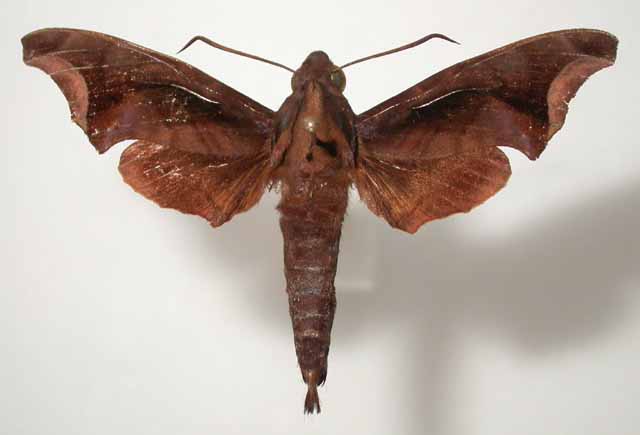
Enyo bathus courtesy of
Jean Haxaire.
This site has been created by Bill Oehlke.
Comments, suggestions and/or additional information are welcomed by Bill.
TAXONOMY:
Family: Sphingidae, Latreille, 1802
Subfamily: Macroglossinae, Harris, 1839
Tribe: Dilophonotini, Burmeister, 1878
Genus: Enyo Hubner, [1819] ...........
Species: bathus (Rothschild, 1904)
|
DISTRIBUTION:
Enyo bathus (Wing span: mm) flies in
Peru with specimen type locality "Huancabamba, east of
Cerro del Pasco, Peru"; Chanchamayo, Junin; Pasco (HM)
Ecuador; and
Bolivia. Jean Haxaire indicates this is a rare species.
"Forewing upperside intermediate in pattern between Enyo gorgon and Enyo taedium taedium; anterior half of wing not as contrastingly pale as in
Enyo gorgon but with a dark brown, median, longitudinal line that diverges apically diverges to form a dark brown triangular patch (larger than in
Enyo gorgon) before the marginal pale brown half-moon shaped patch (narrower than in Enyo gorgon)." CATE
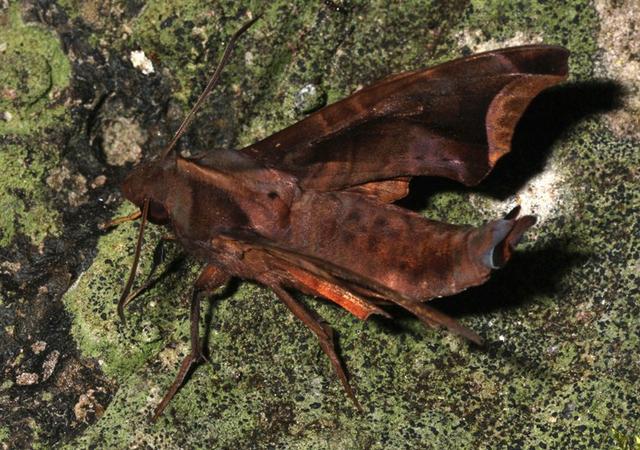
Enyo bathus male, Shima, Junin, Peru,
June 15, 2010, 700m, courtesy of Peter Bruce-Jones.
The pronunciation of scientific names is troublesome for many. The "suggestion" at the top of the page is merely a suggestion. It is based on
commonly accepted English pronunciation of Greek names and/or some fairly well accepted "rules" for latinized scientific names.
The suggested pronunciations, on this page and on other pages, are primarily put forward to assist those who hear with internal ears as they read.
There are many collectors from different countries whose intonations and accents would be different.
Enyo is chosen as the genus name either for 1) the Greek goddess of war and waster of cities, who is sometimes depicted as
the daughter of Ares, but also as his mother or his sister, or for 2) one of the Graeae, the three 'old women' identified with Bellona in Rome.
In Greek "bathus" means deep.
FLIGHT TIMES:
Enyo bathus probably has two to
three broods annually. Peter Bruce-Jones reports a mid June flight in Shima, Junin, Peru. Hubert Mayer reports a July flight in Pasco, Peru.
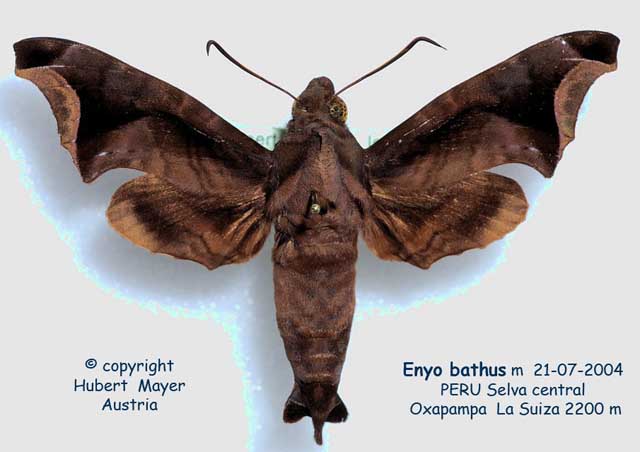
Enyo bathus male, La Suiza, Oxapampa, Selva Central, Pasco, Peru,
July 21, 2004, 2200m, courtesy of Hubert Mayer.
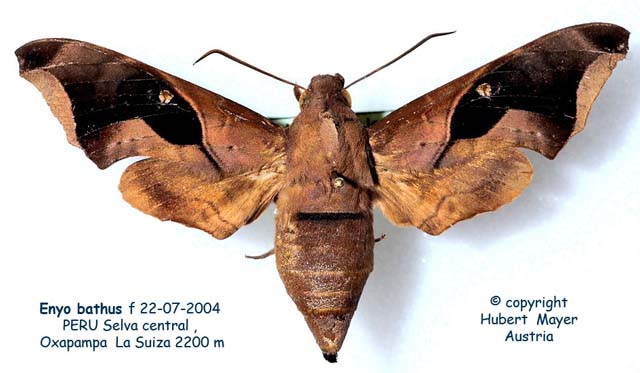
Enyo bathus female, La Suiza, Oxapampa, Selva Central, Pasco, Peru,
July 22, 2004, 2200m, courtesy of Hubert Mayer.
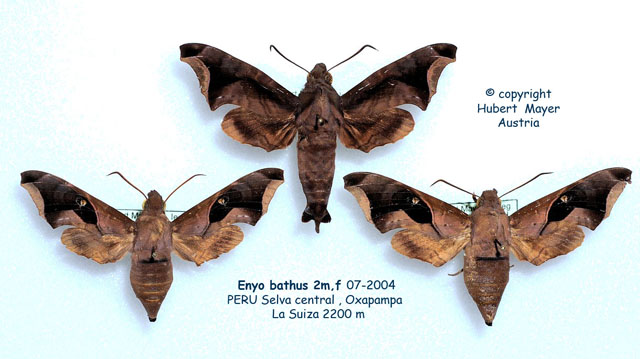
Enyo bathus trio, La Suiza, Oxapampa, Selva Central, Pasco, Peru,
July 21, 2004, 2200m, courtesy of Hubert Mayer.
ECLOSION:
Adults eclose from pupae formed in subterranean chambers.
SCENTING AND MATING:
Females call in the males with a pheromone released from a gland at the tip of the
abdomen. Both males and females nectar at flowers.
EGGS, LARVAE, PUPAE:
Return to Sphingidae Index
Return to Dilophonotini Tribe




